Hyperpigmentation Disorder Treatment Market Analysis 2031
Historic Data: 2021-2023 | Base Year: 2024 | Forecast Period: 2025-2031Hyperpigmentation Disorder Treatment Market Size and Forecast (2021 - 2031), Global and Regional Share, Trend, and Growth Opportunity Analysis Report Coverage: By Treatment Type (Cosmeceutical, Light or Laser Therapy, Microdemabrasion, Chemical Peels, Microbrasion, Others), Disease Type (Melasma, Solar Lentigines, Post-inflammatory Hyperpigmentation, and Others), End User (Hospitals, Dermatology Centers, and Others), and Geography (North America, Europe, Asia Pacific, South and Central America, and Middle East and Africa)
- Report Date : Oct 2025
- Report Code : TIPRE00029977
- Category : Life Sciences
- Status : Published
- Available Report Formats :


- No. of Pages : 234
The Hyperpigmentation Disorder Treatment Market size is projected to reach US$ 12.89 billion by 2031 from US$ 7.50 billion in 2024. The market is expected to register a CAGR of 8.2% during 2025–2031.
Hyperpigmentation Disorder Treatment Market Analysis
The rising prevalence of hyperpigmentation disorders, increasing influence from social media, and rapid advancements in treatment technologies and modalities drive market growth. The increasing demand for natural and plant-based ingredients, the evolution of light and laser-based therapies, and the surging integration of artificial intelligence and telemedicine are expected to create ample opportunities for the market in the coming years.
Hyperpigmentation Disorder Treatment Market Overview
Melasma, post-inflammatory hyperpigmentation, and age spots are often caused by exposure to the sun, hormonal changes, and the natural aging process. The demand for hyperpigmentation disorder treatment is surging, driven by growing aesthetic awareness among consumers, the influence of social media on skincare routines, and the desire for non-invasive procedures, including topical agents, laser therapies, chemical peels, and IPL. AI-based diagnostics for personalized treatments combine brightening and anti-aging benefits with natural/organic elements. North America is currently leading the market, while APAC is the most dynamic market, driven by high levels of pollution and increasing disposable income.
Customize This Report To Suit Your Requirement
You will get customization on any report - free of charge - including parts of this report, or country-level analysis, Excel Data pack, as well as avail great offers and discounts for start-ups & universities
Hyperpigmentation Disorder Treatment Market: Strategic Insights
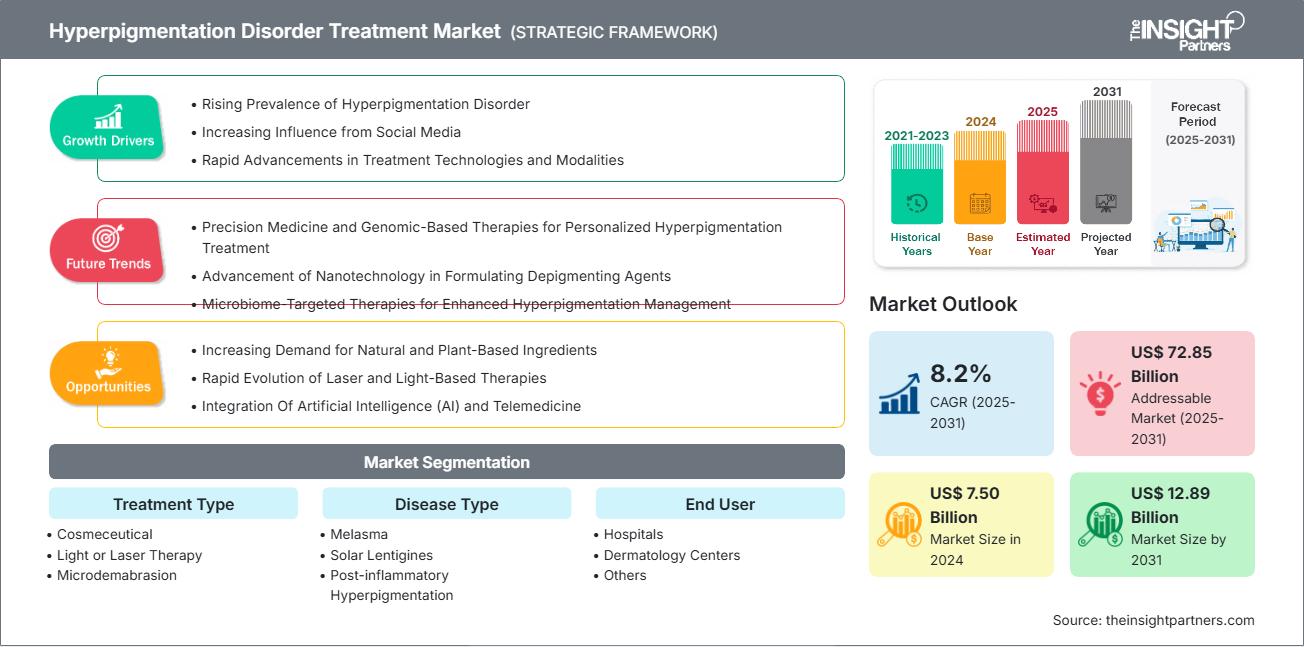
-
Get Top Key Market Trends of this report.This FREE sample will include data analysis, ranging from market trends to estimates and forecasts.
Hyperpigmentation Disorder Treatment Market Drivers and Opportunities
Market Drivers:
- Rising Prevalence of Hyperpigmentation Disorder: Ultraviolet rays and contaminated air are aggravating factors for hyperpigmentation diseases, such as melasma and post-inflammatory hyperpigmentation (PIH), which are commonly observed in individuals with dark skin types. Therefore, there is a growing need for treatment with topical agents, photoprotection, and antioxidant therapies in areas with high urbanization and intense sun exposure.
- Increasing Influence from Social Media: Social media platforms such as Instagram have popularized idealized standards of flawless skin, prompting increased interest in cosmetic treatments particularly among young women and individuals from ethnic backgrounds seeking solutions for skin discoloration. This trend has led to a growing demand for non-invasive cosmetic procedures.
- Rapid Advancements in Treatment Technologies and Modalities: Improvements in treatment with the use of topical, oral, and procedural therapies, such as non-hydroquinone agents, tranexamic acid, and lasers, have extended the effectiveness and safety, making it possible for a wider range of skin types to be treated for hyperpigmentation.
Market Opportunities:
- Increasing Demand for Natural and Plant-Based Ingredients: Products containing naturally derived ingredients, such as niacinamide, kojic acid, and arbutin, are increasingly gaining attention due to consumers' awareness regarding the safety of treating hyperpigmentation. Such consumers are looking for skin care products that are effective, safe, suitable for various skin types, and produced in an environmentally friendly manner.
- Rapid Evolution of Laser and Light-Based Therapies: Picosecond and non-ablative fractional lasers offer precise and effective treatment of hyperpigmentation in various skin types, resulting in fewer sessions and reduced side effects, thereby increasing accessibility and enhancing the clinic's innovation.
- Integration Of Artificial Intelligence (AI) and Telemedicine: Artificial intelligence along with telemedicine facilitates the care of pigmentary disorders in resulting in higher accuracy in diagnosis, making the treatment patient-specific, giving easier access to care. AI not only interprets lesions but also forecasts results and enables teleconsultations which in turn reduces the expenses and at the same time makes patients more self-reliant.
Hyperpigmentation Disorder Treatment Market Report Segmentation Analysis
The hyperpigmentation disorder treatment market is segmented into various categories to provide a clearer understanding of its operation, growth potential, and current trends. Below is the standard segmentation approach used in industry reports:
By Treatment Type:
- Cosmeceutical: Cosmeceuticals employ inhibitors of tyrosinase, such as azelaic acid, mulberry extract, and niacinamide, to achieve a 50-80% improvement in the skin without causing any side effects.
- Light or Laser Therapy: Light and laser treatments, including Q-switched Nd: YAG and picosecond lasers, effectively remove skin darkening, resulting in a 40-90% reduction in melasma and post-inflammatory hyperpigmentation. This necessitates the use of sun protection to prevent the reappearance of symptoms by 20-30%.
- Microdemabrasion: Microdermabrasion gently exfoliates the skin to reduce hyperpigmentation, resulting in a 30–70% improvement in conditions such as melasma and post-inflammatory hyperpigmentation. When combined with laser therapy, it enhances treatment penetration, shortens recovery time, and ensures long-term results—especially when used in conjunction with proper sun protection.
- Chemical Peels: Chemical peels, such as glycolic, salicylic, or TCA, can lead to a 50-80% improvement in post-inflammatory hyperpigmentation and melasma.
- Microbrasion: Microabrasion gently removes epidermal discoloration, resulting in a 20-50% improvement in melasma, post-inflammatory hyperpigmentation (PIH), and lentigines. The result can be improved if a topical such as ascorbic acid is used in combination with the procedure.
- Others: Cryotherapy, microneedling, and pulsed dye laser can help improve hyperpigmentation, which is the main cause of moles, melasma, and post-inflammatory hyperpigmentation. These combined treatments achieve noticeable improvement and reduce relapse by 15%, thus allowing all skin types to be evenly brightened.
By Disease Type:
- Melasma
- Solar Lentigines
- Post-inflammatory Hyperpigmentation
- Others
By End-User Industry:
- Hospitals
- Dermatology Centers
- Others
Each end user in the hyperpigmentation treatment market demands tailored solutions based on treatment type, skin type, and regulatory compliance
By Geography:
- North America
- Europe
- Asia Pacific
- Latin America
- Middle East & Africa
The regional trends and factors influencing the Hyperpigmentation Disorder Treatment Market throughout the forecast period have been thoroughly explained by the analysts at The Insight Partners. This section also discusses Hyperpigmentation Disorder Treatment Market segments and geography across North America, Europe, Asia Pacific, Middle East and Africa, and South and Central America.
Hyperpigmentation Disorder Treatment Market Report Scope
| Report Attribute | Details |
|---|---|
| Market size in 2024 | US$ 7.50 Billion |
| Market Size by 2031 | US$ 12.89 Billion |
| Global CAGR (2025 - 2031) | 8.2% |
| Historical Data | 2021-2023 |
| Forecast period | 2025-2031 |
| Segments Covered |
By Treatment Type
|
| Regions and Countries Covered |
North America
|
| Market leaders and key company profiles |
|
Hyperpigmentation Disorder Treatment Market Players Density: Understanding Its Impact on Business Dynamics
The Hyperpigmentation Disorder Treatment Market is growing rapidly, driven by increasing end-user demand due to factors such as evolving consumer preferences, technological advancements, and greater awareness of the product's benefits. As demand rises, businesses are expanding their offerings, innovating to meet consumer needs, and capitalizing on emerging trends, which further fuels market growth.
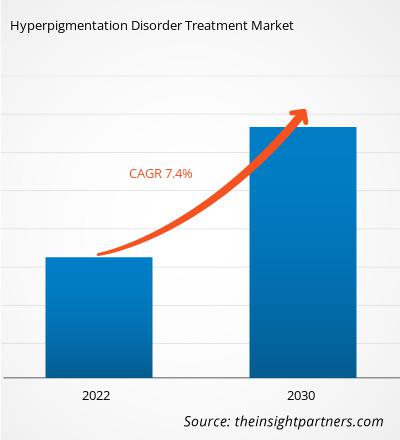
- Get the Hyperpigmentation Disorder Treatment Market top key players overview
Hyperpigmentation Disorder Treatment Market Share Analysis by Geography
The hyperpigmentation disorder treatment market in Asia Pacific is witnessing the fastest growth driven by the high prevalence of hyperpigmentation due to UV exposure, genetic factors, hormonal influences, and pollution. Emerging markets in Latin America, the Middle East, and Africa have untapped opportunities for hyperpigmentation disorder treatment providers to expand.
The hyperpigmentation disorder treatment market grows differently in each region due to increasing prevalence of various hyperpigmentation disorders, social medial influence, and rapid technological advancements. Below is a summary of market share and trends by region:
1. North America
- Market Share: Holds a significant portion of the global market
-
Key Drivers:
- Rising demand for aesthetic procedures, increasing prevalence of skin disorders, and growing awareness about advanced dermatological treatments
- Trends: Growing adoption of personalized skincare solutions and advanced laser technologies
2. Europe
- Market Share: Substantial share due to early adoption of Hyperpigmentation Disorder Treatment
-
Key Drivers:
- High healthcare expenditure, growing demand for cosmetic procedures, and increasing awareness about skin health, supported by the strong presence of dermatology clinics and product innovations
- Trends: Rising preference for natural and organic ingredients in pigmentation treatments
3. Asia Pacific
- Market Share: Fastest-growing region with rising market share every year
-
Key Drivers:
- Large population base, rising disposable income, increasing beauty consciousness, and higher prevalence of pigmentation issues, especially in countries such as India, China, and South Korea
- Trends: K-beauty influence and increasing use of multifunctional skincare products
4. South and Central America
- Market Share: Growing market with steady progress
-
Key Drivers:
- Expanding access to dermatological care, increasing urbanization, and rising interest in beauty and wellness, particularly among younger demographics and women
- Trends: Social media influence and the growing popularity of local skincare brands
5. Middle East and Africa
- Market Share: Although small, but growing quickly
-
Key Drivers:
- Growing medical tourism, rising adoption of aesthetic treatments, and increasing awareness of skin health among affluent populations
- Trends: Demand for premium skincare brands and minimally invasive aesthetic procedures
Hyperpigmentation Disorder Treatment Market Players Density: Understanding Its Impact on Business Dynamics
High Market Density and Competition
Competition is strong due to the presence of established players such as AbbVie Inc, Bayer AG, Epipharm AG, and Galderma Laboratories.
This high level of competition urges companies to stand out by offering:
- Advanced security features
- Value-added services such as Analytics & predictive maintenance, real‑time operational analytics, and installation
- Competitive pricing models
- Strong customer support and easy integration
Opportunities and Strategic Moves
- Consumer preference is strongly shifting toward non invasive procedures, including topical agents, chemical peels, and advanced lasers. Companies can grow by offering evidence-based formulations and technology-driven services.
- Combining pigmentation and anti-aging benefits in a single formula responds to the demand for streamlined regimens and premium positioning. Targeting younger demographics with preventive solutions supports long-term demand.
Other companies analyzed during the course of research:
- Unilever
- Beiersdorf AG
- Estée Lauder Companies
- Procter & Gamble Co.
- Shiseido Co., Ltd.
- Bayer AG
- Episciences
- SkinCeuticals International
- RXi Pharmaceuticals Corporation
- Lumenis Ltd.
- Cutera, Inc.
- Syneron / Candela
- Alma Lasers Ltd.
- Sciton, Inc.
- Fotona d.o.o.
- Lynton Lasers Ltd.
- El.En. S.p.A. / Deka Laser Technologies
- PCA Skin (by Colgate‑Palmolive)
- Mesoestetics
- Pureplay Skin Sciences
Hyperpigmentation Disorder Treatment Market News and Recent Developments
- Alkem expands hyperpigmentation solutions offering with Kojiglo serum launch Alkem Laboratories Limited expanded its product offering in the Indian market with the launch of its 'Kojiglo' serum. Designed to address and treat facial hyperpigmentation, Alkem's new serum is part of its plan to increase its market share in the skincare segment.
- SkinMedica Launches Even & Correct Allergan Aesthetics launched SkinMedica Even & Correct Collection. Clinically proven and formulated to deliver targeted results, these three products work to even skin tone and reduce the appearance of hyperpigmentation and dark spots on the face: Advanced Brightening Treatment, Dark Spot Cream, and Brightening Treatment Pads.
- L’Oréal Paris unveils breakthrough pigmentation treatment L’Oréal Paris introduced the Melasyl molecule, powering its Bright Reveal Serum. Melasyl is designed to precisely target localised pigmentation, including dark spots and post-acne marks, while enhancing each individual’s natural skin tone
Hyperpigmentation Disorder Treatment Market Report Coverage and Deliverables
The "Hyperpigmentation Disorder Treatment Market Size and Forecast (2021–2031)" report provides a detailed analysis of the market covering below areas:
- Hyperpigmentation Disorder Treatment Market size and forecast at global, regional, and country levels for all the key market segments covered under the scope
- Hyperpigmentation Disorder Treatment Market trends, as well as market dynamics such as drivers, restraints, and opportunities
- Detailed PEST and SWOT analysis
- Hyperpigmentation Disorder Treatment Market analysis covering key trends, global and regional framework, major players, regulations, and recent developments
- Industry landscape and competition analysis covering market concentration, heat map analysis, prominent players, and recent developments for the Hyperpigmentation Disorder Treatment Market
- Detailed company profiles
Frequently Asked Questions
Which region dominated the hyperpigmentation disorder treatment market in 2024?
Which are the leading players operating in the hyperpigmentation disorder treatment market?
What are the factors driving the hyperpigmentation disorder treatment market?
What would be the estimated value of the hyperpigmentation disorder treatment market by 2031?
What is the expected CAGR of the hyperpigmentation disorder treatment market?
Mrinal is a seasoned research analyst with over 8 years of experience in Life Sciences Market Intelligence and Consulting. With a strategic mindset and unwavering commitment to excellence, she has built deep expertise in pharmaceutical forecasting, market opportunity assessment, and developing industry benchmarks. Her work is anchored in delivering actionable insights that empower clients to make informed strategic decisions.
Mrinal’s core strength lies in translating complex quantitative datasets into meaningful business intelligence. Her analytical acumen is instrumental in shaping go-to-market (GTM) strategies and uncovering growth opportunities across the pharmaceutical and medical device sectors. As a trusted consultant, she consistently focuses on streamlining workflow processes and establishing best practices, thereby driving innovation and operational efficiency for her clients.
- Historical Analysis (2 Years), Base Year, Forecast (7 Years) with CAGR
- PEST and SWOT Analysis
- Market Size Value / Volume - Global, Regional, Country
- Industry and Competitive Landscape
- Excel Dataset
Testimonials
The Insight Partners' SCADA System Market report is comprehensive, with valuable insights on current trends and future forecasts. The team was highly professional, responsive, and supportive throughout. We are very satisfied and highly recommend their services.
RAN KEDEM Partner, Reali Technologies LTDsI requested a report on a very specific software market and the team produced the report in a few days. The information was very relevant and well presented. I then requested some changes and additions to the report. The team was again very responsive and I got the final report in less than a week.
JEAN-HERVE JENN Chairman, Future AnalyticaWe worked with The Insight Partners for an important market study and forecast. They gave us clear insights into opportunities and risks, which helped shape our plans. Their research was easy to use and based on solid data. It helped us make smart, confident decisions. We highly recommend them.
PIYUSH NAGPAL Sr. Vice President, High Beam GlobalThe Insight Partners delivered insightful, well-structured market research with strong domain expertise. Their team was professional and responsive throughout. The user-friendly website made accessing industry reports seamless. We highly recommend them for reliable, high-quality research services
YUKIHIKO ADACHI CEO, Deep Blue, LLC.This is the first time I have purchased a market report from The Insight Partners.While I was unsure at first, I visited their web site and felt more comfortable to take the risk and purchase a market report.I am completely satisfied with the quality of the report and customer service. I had several questions and comments with the initial report, but after a couple of dialogs over email with their analyst I believe I have a report that I can use as input to our strategic planning process.Thank you so much for taking the extra time and making this a positive experience.I will definitely recommend your service to others and you will be my first call when we need further market data.
JOHN SUZUKI President and Chief Executive Officer, Board Director, BK TechnologiesI wish to appreciate your support and the professionalism you displayed in the course of attending to my request for information regarding to infectious disease IVD market in Nigeria. I appreciate your patience, your guidance, and the fact that you were willing to offer a discount, which eventually made it possible for us to close a deal. I look forward to engaging The Insight Partners in the future, all thanks to the impression you have created in me as a result of this first encounter.
DR CHIJIOKE ONYIA MANAGING DIRECTOR, PineCrest Healthcare Ltd.Reason to Buy
- Informed Decision-Making
- Understanding Market Dynamics
- Competitive Analysis
- Identifying Emerging Markets
- Customer Insights
- Market Forecasts
- Risk Mitigation
- Boosting Operational Efficiency
- Strategic Planning
- Investment Justification
- Tracking Industry Innovations
- Aligning with Regulatory Trends












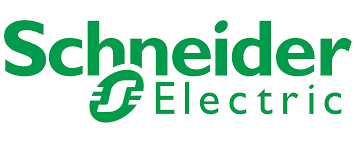


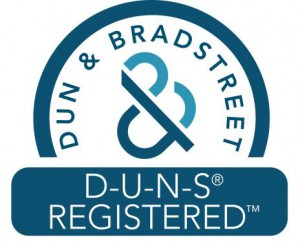
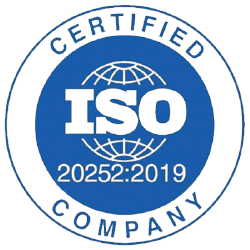



 Get Free Sample For
Get Free Sample For